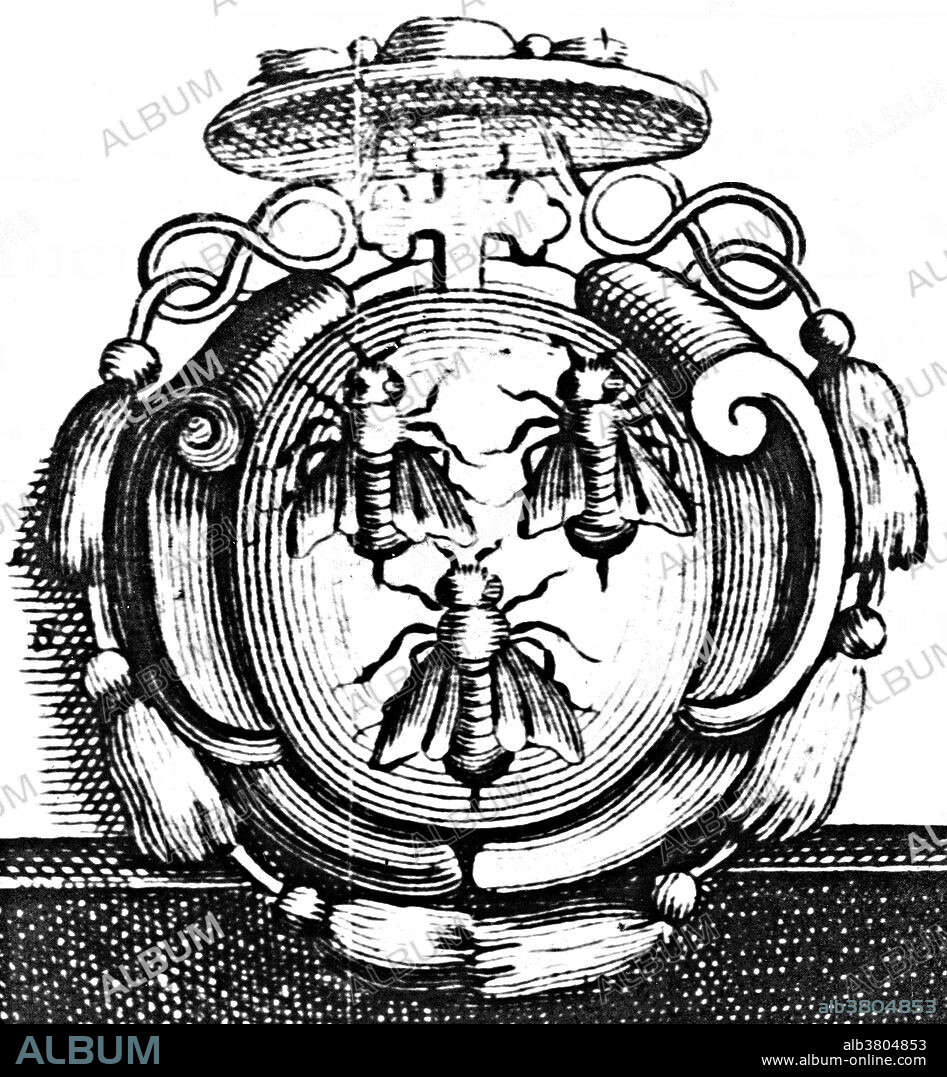alb3804853
Bees Depicted on Ecclesiastical Heraldry

|
Añadir a otro lightbox |
|
Añadir a otro lightbox |



¿Ya tienes cuenta? Iniciar sesión
¿No tienes cuenta? Regístrate
Compra esta imagen

Título:
Bees Depicted on Ecclesiastical Heraldry
Descripción:
Ver traducción automática
Coat of arms (three bees) for Francesco Barberini an Italian Catholic Cardinal. Ecclesiastical heraldry is the tradition of heraldry developed by Christian clergy. Initially used to mark documents, ecclesiastical heraldry evolved as a system for identifying people and dioceses. It is most formalized within the Catholic Church, where most bishops, including the Pope, have a personal coat of arms. Bees are flying insects closely related to wasps and ants, and are known for their role in pollination and for producing honey and beeswax. Bees are hymenopterous insect of the superfamily Apoidea. They are found on every continent except Antarctica, in every habitat on the planet that contains insect-pollinated flowering plants.
Crédito:
Album / Science Source / New York Public Library
Autorizaciones:
Modelo: No - Propiedad: No
¿Preguntas relacionadas con los derechos?
¿Preguntas relacionadas con los derechos?
Tamaño imagen:
3900 x 4216 px | 47.0 MB
Tamaño impresión:
33.0 x 35.7 cm | 13.0 x 14.1 in (300 dpi)
Palabras clave:
ANIMAL • ANIMALIA • APICULTURA • APOIDEA • ARTE • ARTROPODO • ARTROPODOS • BIOLOGIA • BLANCO Y NEGRO • CATOLICO ROMANO • CATOLICO • CRISTIANO • DIBUJO • ENTOMOLOGIA • ESCUDO DE ARMAS • FAUNA • HIMENÓPTEROS • HISTORIA • HISTORICO • HYMENOPTERA • ILUSTRACION • INSECTA • INSECTO • INVERTEBRADO • ITALIANO • OBRA DE ARTE • SIGLO XVII • ZOOLOGIA
 Pinterest
Pinterest Twitter
Twitter Facebook
Facebook Copiar enlace
Copiar enlace Email
Email
